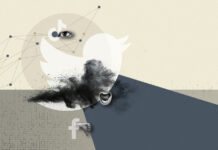
It’s just unbelievable. Public service broadcasting has gotten into crisis talk all over the country, nationally and internationally. And then that: international teletext artists from Bloom Jr. (Germany), Buzzlightning (Germany) to Juha van Ingen (Finland) to Nissla (Austria) and sp4ce (Germany) will show their skills until September 21st.
Under the title “Teletext ist Kunst” there is an on-air exhibition from page 830 of the offer of “Das Erste”, as the broadcaster announced.
So contribution money for art. Is that good or if so – can it go away? 15 international artists have taken up the challenge of creating art with just six colors plus black and white, as they say. This happens in a grid of 78 by 69 pixels using specially made teletext software.
The bandwidth of the different artistic approaches and implementations ranges from monochrome images to figurative representations to abstract works of art that sometimes look like paintings.
The starting point has always been the same: how can you create an image, send a message, convey an emotion when there are so few colors and so few pixels to fit on the digital canvas? That doesn’t really work – and that’s why it’s all the more fascinating if it does work.
A total of 67 works fill a pixelated gallery, they create something big, they celebrate imagination and creativity with very few means and in very little space and thus and there where there is actually nothing to celebrate. A media product cannot be more sober than the completely information-oriented teletext.
Teletext was launched by the BBC in 1974, ORF and ARD launched their teletext offerings in 1980; technically there have been hardly any changes since then. A teletext page is a grid of 24 rows and 40 columns. Each grid part can be used for a letter, number, special character, control character or up to six graphic pixels. And there are only six colors, black and white.
Depressing, isn’t it? No, the ongoing success shows how a medium can survive and survive all times, developments and innovations. Test images and transmission breaks may have been abolished once and for all in current television, but teletext has not.
The success of the medium, which has also been successful on the Internet and as an app for many years, is due, among other things, to its ease of use, the high degree of technical dissemination and, of course, its up-to-date content. The latest information is offered in a very concise, very understandable and very accurate manner.
Anyone can grab their cell phone or laptop while watching TV, of course, but with the remote control the teletext is immediately “paged through”, the right page is selected – and the content is displayed on such a large screen that even weakened eyes don’t have to guess for long. whatever letters are combined into words and thus into easily readable information.
More than ten million people use teletext every day in Germany alone. An impressive number.
Such success should make one cautious, cautious about whether such an old medium should not be abolished. That’s exactly what the regional broadcaster Omroep West in The Hague wanted. Editor-in-chief Henk Ruijl had announced that the channel with news, sports and weather reports, which is probably no longer used by many people, would be discontinued and the editors would be given more breathing space for the rest of their work.
A wave of protests ensued. More than 1,000 viewers contacted the regional public television station by email, phone or letter, asking them to keep the teletext that was important to them.
Among them were also viewers who had reported on behalf of neighbors or parents, and the tip came from prisons that the teletext is read there, said the editor-in-chief.
For a number of people, teletext represents an important link to the outside world, and for the broadcaster it is the only offer whose use cannot be measured. “You have convinced us,” said the broadcaster in the Netherlands, even in times of apps, the Internet and Tiktok, Omroep West will now keep teletext – and even expand the offer.
In Germany, the reactions would hardly be different. Teletext is money well invested and “Teletext is art” is the appropriate quod-erat demonstration.

















